Apple iPhone history: the evolution of the smartphone that started it all
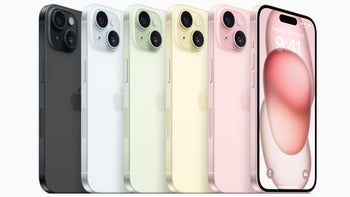
The history of the Apple iPhone series starts back in 2007 when Steve Jobs took the world by surprise with the announcement of a mysterious 3-in-1 device, which for the first time combined an iPod music player, an Internet communication device and a traditional phone. That was the original Apple iPhone.
And while the iPhone has changed a lot since its inception, the foundation that was laid at the start was a solid one that ensured success for years to come. Every iPhone would deliver predictably smooth performance, a recognizable, easy to use interface, a focus on privacy and come with a set of features that would make it stand out.
- Best iPhone right now: the ultimate guide
In this article, we look at the innovation that came with each new iPhone, all the major features that each model brought, starting from the very first one and going to the most recent phones.
So here is the Apple iPhone History...
All the iPhones in order:
- iPhone (2007)
- iPhone 3G (2008)
- iPhone 3GS (2009)
- iPhone 4 (2010)
- iPhone 4s (2011)
- iPhone 5 (2012)
- iPhone 5s and iPhone 5c (2013)
- iPhone 6 and iPhone 6 Plus (2014)
- iPhone 6s and iPhone 6s Plus (2015)
- iPhone SE (2016)
- iPhone 7 and iPhone 7 Plus (2016)
- iPhone X, iPhone 8 and iPhone 8 Plus (2017)
- iPhone XR, XS and XS Max (2018)
- iPhone 11, 11 Pro and 11 Pro Max (2019)
- iPhone SE (2020)
- iPhone 12 mini, 12, 12 Pro and 12 Pro Max (2020)
- iPhone 13 mini, 13, 13 Pro and 13 Pro Max (2021)
- iPhone SE 3rd Gen (2022)
- iPhone 14, 14 Plus, 14 Pro and 14 Pro Max (2022)
- iPhone 15, 15 Plus, 15 Pro and 15 Ultra (2023)
- iPhone SE 4th Gen (expected in 2024)
- iPhone 16, 16 Plus, 16 Pro and 16 Ultra (expected in September 2024)
Original iPhone
June 2007
"iPhone combines three products — a revolutionary mobile phone, a widescreen iPod with touch controls, and a breakthrough Internet communications device with a desktop-class email, web browsing, maps, and searching — into one small and lightweight handheld device."
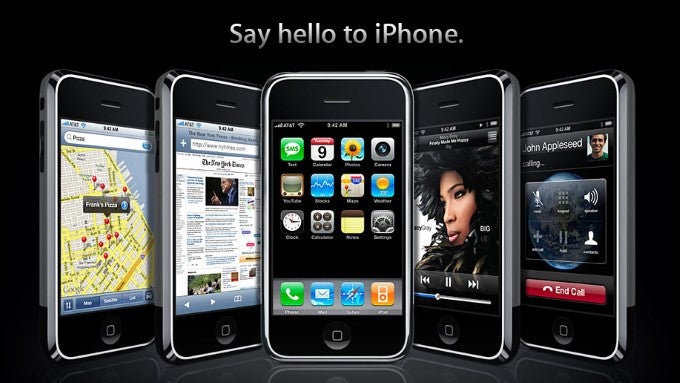
The list of breakthrough innovations in the original iPhone is so long and there is so much history behind each of them that an article (nay, a book) won't be enough to properly describe it, but here is a very short summary:
- 3.5-inch display with a resolution of 320 x 480 pixels
- iOS, a new multi-touch interface controlled entirely by your finger
- Internet Connectivity (2G) with native email client and web browser
- 2-megapixel photo camera with NO video recording capabilities
- Ambient light sensor, proximity sensor
- On-screen keyboard
- 4GB / 8 GB / 16GB storage models
- YouTube and Google Maps applications, Google Search
- iPod music / video player with support for iTunes
iPhone 3G
July 2008
The iPhone 3G kept the same screen size as the original, but went with a new, glossy plastic design and added 3G connectivity, making it much faster to load web pages. The iPhone 3G was also the first iPhone with GPS, the satellite communication that allows your phone to know its exact position and a quintessential part of a better maps and navigation experience.
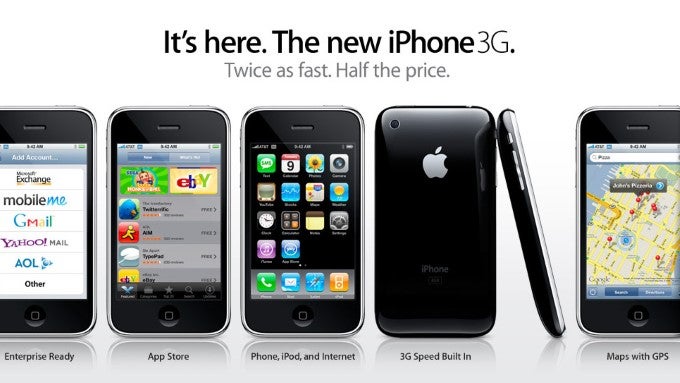
The iPhone 3G did away with the 4GB storage option and was only available in an 8GB and 16GB versions. This new iPhone also fixed an important oversight: the 3.5mm jack on the original iPhone was deeply flawed, it was way too recessed inside the body of the device and this made actually using many headphones impossible without an adapter (ah, the irony!). Apple itself admitted on its website for the OG iPhone that "some stereo headphones may require an adapter (sold separately) to ensure proper fit."
The iPhone 3GS was a gradual upgrade rather than a radical move, but it still brought important speed improvements and faster 3G connectivity.
The S in 3GS stood for speed, as the phone was more powerful, zippier, but its most important novelty was probably that it was the first iPhone that could record video. The iPhone 3GS' new 3-megapixel camera debuted a video mode and was able to record videos at VGA (480p) resolution.
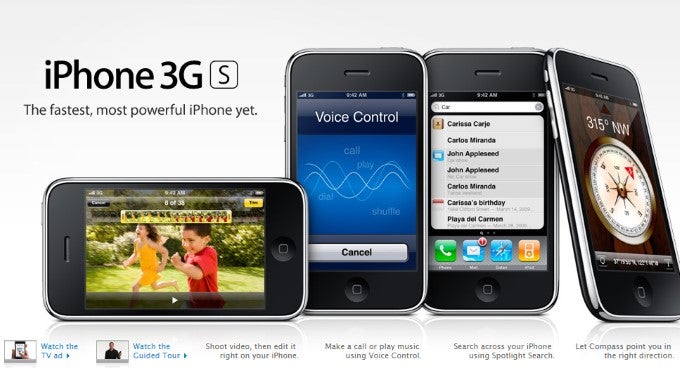
It was also the first iPhone with a digital compass that allowed it to correctly show you your orientation in space in Maps.
The rest of the innovation here was a lot about software: core features like copy and paste, push notifications, landscape keyboard and more arrived in 2009.
iPhone 4
June 2010
For many Apple customers, the iPhone 4 was the best iPhone design of all time. The iPhone 4 was the first major redesign within the iPhone series, introducing a stunning for the time glass construction with a metal frame. It was also the first iPhone to come with a 'Retina' display, a new screen resolution of 640 x 960 pixels that was so sharp Apple said it compares to the the natural limits of the human retina. This was the first phone with such a high resolution and it remained so for the next couple of years.
There was also a big scandal around the iPhone 4, the so-called antenna-gate. The issue was that when held a certain way, cellular signal got easily blocked by your hand and while Apple never formally fixed this, it did offer free bumpers that alleviated the issue.
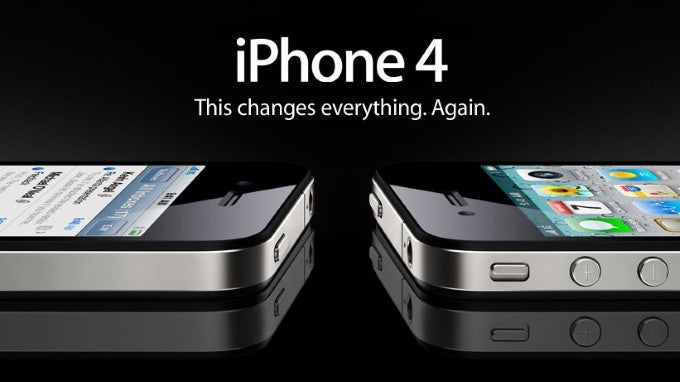
The list of innovations in the iPhone 4 is too long, so we'll just quickly go through the most important ones right below:
- Highest phone resolution of the time, 'Retina' display
- First iPhone with a front-facing, selfie camera
- New 5-megapixel camera capable of 720p HD video recording
- Smaller, micro-SIM card slot
- New glass-and-metal design
- Secondary mic for noise cancellation
A few months after its launch on AT&T, Apple's exclusive partner, the iPhone 4 finally launched on Verizon Wireless in the beginning of 2011.
iPhone 4s
September 2011
2011 was probably the toughest and saddest year for Apple, its fans and the community: on October 5th, 2011, just a day after the introduction of the iPhone 4s, Steve Jobs, the man that created Apple, shaped it as a company and single-handedly led it with his unique vision for technology passed away. Jobs left Tim Cook, Apple's former logistics chief as the CEO, and Cook hosted the iPhone 4s unveiling.
The big feature of the iPhone 4s was Siri, the smart voice assistant that impressed with its ability to ask tricky questions with a pinch of humor and who would console you with a joke when you need it. It also set alarms and calendar appointments. The newer iPhone, however, remained a 3.5-inch phone, smaller than the Android competition that was getting a foothold among customers who wanted bigger devices.
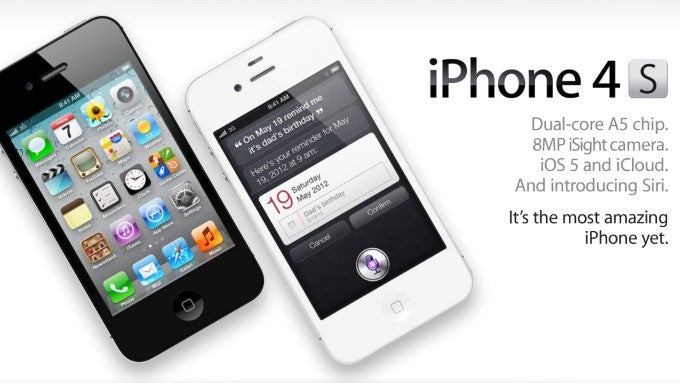
The iPhone 4s debuted with a new, two-antenna design and fixed the dreadful 'antenna-gate' problems of the iPhone 4. The major new features introduced with the iPhone 4s included a more powerful, dual-core chip, the Apple A5, a new 8-megapixel camera capturing more detailed pictures, with better white balance, and iCloud, a cloud-storage solution.
In October 2011, Sprint also finally got the rights to sell Apple's iPhone and started offering the iPhone 4s, iPhone 4 and iPhone 3GS to its customers.
iPhone 5
September 2012
The Apple iPhone 5 brought a slightly bigger and taller display than previous iPhones, but it was not the radical change that many users expected: it grew from 3.5 inches to 4 inches in screen size, and with it came a 16:9 aspect ratio (different from the 3:2 used before), which proved to be more practical for video, traditionally shot in 16:9.
The iPhone 5 also marked a monumental moment for Apple: it was the first phone with a chip that Apple itself made as it sought independence from Qualcomm. The Apple A5 impressed with its design and speed improvements, and set an important foundation. Apple was now able to better optimize the performance of its phone to the chip that it itself made. The new iPhone 5 design was also thinner and lighter.
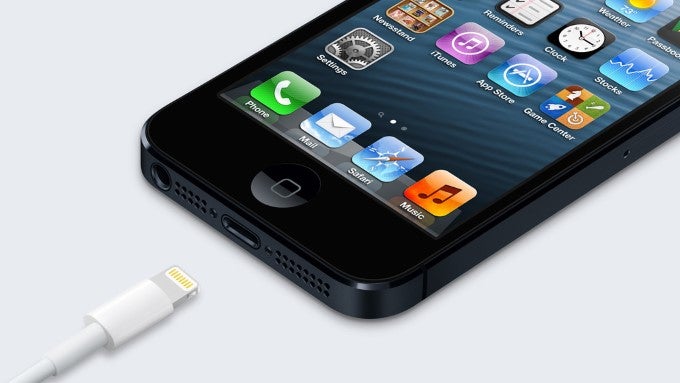
It was - finally! - the first iPhone with 4G LTE support. The display was also improved in terms of color, it was well-balanced for the sRGB standard used across the web for images and video.
This was also the time when iOS software chief Scott Forstall was shown the door as the newly-launched Apple Maps app, a project that he led, failed spectacularly at start. This would later lead to a huge change in the iOS interface that would move from the old-fashioned skeuomorphic design.
Months after the launch of the iPhone 5, the last big U.S. carrier finally got the rights to sell it: T-Mobile joined AT&T, Verizon Wireless and Sprint in carrying the iPhone. This was around the time when John Legere started the massive change at T-Mobile and grew it to where it is now.
Months after the launch of the iPhone 5, the last big U.S. carrier finally got the rights to sell it: T-Mobile joined AT&T, Verizon Wireless and Sprint in carrying the iPhone. This was around the time when John Legere started the massive change at T-Mobile and grew it to where it is now.
iPhone 5s and iPhone 5c
September 2013
As competitors had already moved to bigger-screen phones as the standard, all eyes were on Apple in late 2013. Everyone expected a bigger phone, but the company was not yet ready to show that. What it had up its sleeve was the iPhone 5s, which featured the same size and design.
Yet still, this was an important 'S' update with two key features that were years ahead of the competition: a new Apple A7 'Cyclone' chip, the first 64-bit chip on a phone, years before others even had started work on 64-bit chips, and then also 'Touch ID', the fingerprint-based secure identification system that would take years to properly implement on Android phones. It also brought improvements to low-light camera performance and other minor enhancements.
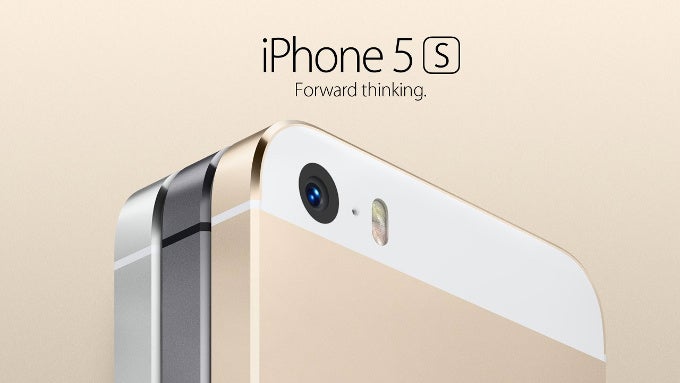
The iPhone 5s also marks a new era for iOS: in June 2013 at WWDC, Apple announced a radical change to the iOS design with iOS 7. The new Jony Ive-designed interface did away with the old-fashioned elements in iOS in favor of a flatter, transparency-rich interface that felt like a huge step forward.
Let's also not forget about the iPhone 5c, the colorful plastic iPhone with an affordable price that many people bought.
iPhone 6 and iPhone 6 Plus
September 2014
In 2015, after years of waiting, Apple - finally! - showed an iPhone with a bigger screen. In fact, there was two of them: the 4.7-inch iPhone 6 and the 5.5-inch iPhone 6 Plus.
The pair sold like hotcakes: it brought both a Galaxy S and a Galaxy Note competitor, but it was also clearly better designed, with a thin and streamlined, durable aluminum body. It felt on another level than the cheap-feeling plastic designs from Samsung. It's safe to say now that the iPhone 6 was an important step towards establishing premium, metal designs as the standard among flagships.
The iPhone 6 and 6 Plus also introduced a much better camera with faster auto-focusing and support for continuous auto-focus in videos.
There was a change in storage options: the iPhone 6 base model was still a 16GB one, but there were 64GB and 128 gig options for more demanding users.
iPhone 6s and iPhone 6s Plus
September 2015
After going on a crusade for thicker iPhones, in 2015, for the first time, Apple actually increased the thickness of its new iPhones. The main reason for the thicker body of the new iPhones was a new display technology that allowed the phone to sense the force of a touch. Apple called the tech 3D Touch and introduced it to a lot of its own apps. It all worked a bit as a right click, a neat time-saving shortcut for many apps.
The iPhone 6s and 6s Plus were the first iPhones able to record 4K video. Android phones had come with 4K video for years, but all of them had annoying limitations such as 5-minute limit to video clips and no ability to edit 4K footage on the phones. The iPhone 6s might have been late, but it got all those things right: video came very crisp, recorded at high bit-rates, and Apple updated its excellent iMovie with support for up to two 4K video channels. At the time, many laptops could not handle 4K video editing, outdone by a phone.
Other cool iPhone 6s features included Live Photos that recorded a short video before and after a still image, a set of new 3D Touch-enabled Motion Wallpapers, a new rose gold color, as well as support for 'Hey, Siri', a hands-free voice command that activated the smart iPhone assistant.
iPhone SE
April 2016
The first-generation iPhone SE brought back the familiar 4-inch form factor from the recent past to the joy of compact phone lovers.
But the most remarkable thing about it was the price: it was the first truly affordable iPhone, priced at $400 for the base 16GB model.
What was great about the SE was that Apple had equipped it with the same powerful chip as its flagship 6s peers, and a very similarly performing main camera. The biggest compromise had to be made with battery life which was sub-par compared to the bigger models.
iPhone 7 and iPhone 7 Plus
September 2016
In 2017, two big things happened to the iPhone: Apple killed the headphone jack and both new iPhones got water-proofing. In a 'courageous', typical Apple move, the company killed our good old pal, the 3.5mm headphone jack. The outcry was huge and while it did not affect sales much as the iPhone 7 broke all previous Apple sales records, many people were annoyed by this move.
Also, the iPhone 7 Plus for the first time differentiated itself as the more capable camera phone, with a dual camera system where a secondary, "telephoto" lens allowed taking zoomed-in photos and applying a new "Portrait mode" effect that would blur the background in an image for a professional, DSLR-like look. The little iPhone 7 also got a better camera: it now came with optical image stabilization (OIS), which contributed to more blur-free pictures and better video stabilization.
The other big news was the new jet black color that was available in very limited quantities and felt almost like glass, but got scratched extremely easily. A new, matte black color was also available and while not as stunning to look at, it was more practical and less prone to scratches.
Apple continued improving the displays of its iPhones as well by introducing a new, wide-color DCI-P3 mode that made everything look more vibrant, more impressive.
Apple iPhone X, iPhone 8 and iPhone 8 Plus
September 2017
Apple introduced a record three new iPhones in 2017 and back then kept the iPhone 7, 6s and SE series available, making its overall portfolio of iPhones the biggest ever offered.
This year also marked the first time we saw an iPhone priced at $1,000, much higher than the $750 that Apple typically asked for a Plus sized iPhone before.
And the iPhone X was really the iPhone that paved the way for the future: it was the first one with a bezel-less edge-to-edge screen (yes, with the notch) and it was the first with an OLED display. This also meant the demise of Touch ID fingerprint recognition: the brand new Face ID system that recognized your face proved more secure and easier to use.
The rest of the iPhone innovation that year was shared between the iPhone X, iPhone 8 and iPhone 8 Plus: the glass back, the wireless charging, the Apple A11 Bionic chip with its neural engine, as well as the new for the time 64GB and 256GB storage options.
iPhone XR, iPhone XS and iPhone XS Max
September 2018
In late 2018, Apple cemented the tradition of launching three new phones at once, but this time all of the three new phones used the gesture navigation and Face ID systems that were the way for the future of the company.
The iPhone XS and iPhone XS Max continued following the example set by the iPhone X: super premium, $1,000 plus prices that Apple tied to the next-generation AMOLED displays it used in these phones, plus both featured a dual camera system with a main and a 2X zoom telephoto lens.
The iPhone XR was the most affordable in the series, but still not cheap by traditional smartphone pricing terms with a price starting at $750. The XR introduced a colorful new design with vibrant tonalities for the back of the device. It used larger bezels on the front and Apple opted for the LCD screen technology with a quite low HD+ resolution, but kept the same powerful processor as on the XS series here and also used the very same main camera, factors that combined with the allure of the iOS ecosystem elevated the iPhone XR to become the best selling iPhone of the series.
iPhone 11, iPhone 11 Pro and iPhone 11 Pro Max
September 2019
In 2019, Apple again launched three new iPhones that were quite similar to what it had offered in the previous year.
The main change was in the camera where all three iPhones received a brand new ultra-wide camera that allowed users to capture incredible landscape photos, as well as shoot in tight spaces.
The iPhone 11 Pro and 11 Pro Max got the 'Pro' moniker that Apple seemed to associate again with their high quality AMOLED screens. In 2019, Apple gave users what users had requested for years: slightly thicker phones with a much, much bigger batteries that finally elevated the Pro and especially the Pro Max to the top of battery life rankings. The other important feature that the phones got was Night Mode, a new camera mode that would have the phone smartly combine a long exposure image with multiple others in an automated, easy process that captured good images in very dim light.
The iPhone 11 was again the most popular model in the series. Apple smartly decided to lower its starting price to $700, $50 less than the starting price of the iPhone XR from the preceding year and that move helped further boost the iPhone 11 popularity. Critics, however, pointed out that Apple was still using an old LCD technology and low resolution panel in a phone that costs quite a lot, while the competition was ahead in this regard.
iPhone SE (2020)
April 2020

Apple brought back the SE branding in early 2020 just as the coronavirus pandemic unfolded blowing heavy hits to the economy, and the phone was an instant success. Priced at $400 and powered by the latest at the time Apple A13 chip, it was far more powerful than any Android phone in that price range.
But the new iPhone SE (2020) wasn't quite as tiny as the original 4-inch SE. Instead, it actually uses an iPhone 8 chassis, so you got a 4.7-inch screen. The single camera on the back was capable of recording 4K videos with great quality and while others also offered an ultra-wide and sometimes even telephoto lenses at this budget, the new SE did stand out with quality of its single lens.
The biggest complaint about this phone is to this day the battery life. Having a tiny 1800mAh battery inside meant that if you used your phone a bit more during the day, you would need to recharge it even before you get home from work, which is definitely not a great experience.
iPhone 12 Mini, 12, 12 Pro and 12 Pro Max
October 2020
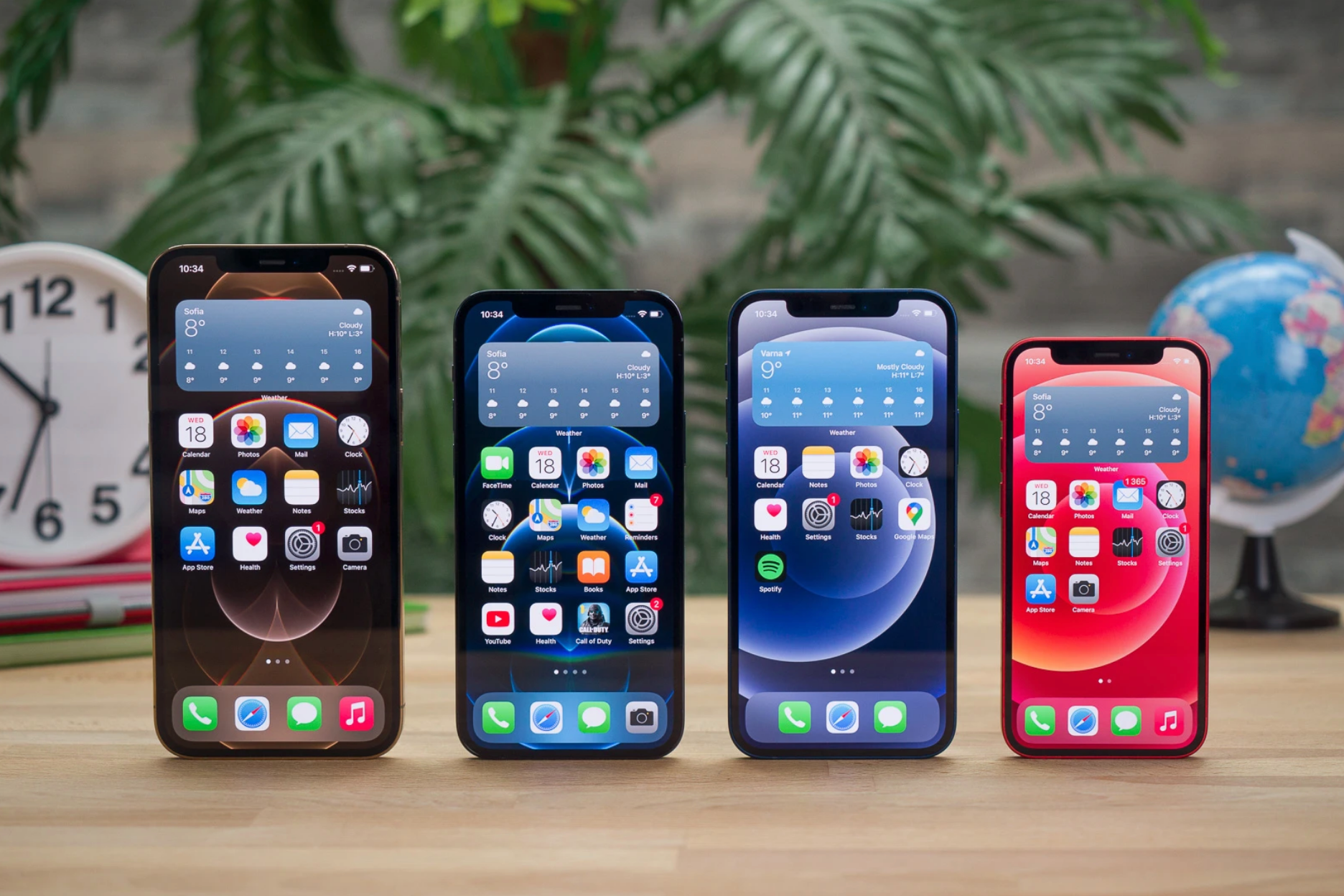
In late 2020, Apple for the first time launched four iPhones at pretty much the same time. After years of sticking with similar designs, the 12 series featured a complete refresh in the looks department: flat sides, thin bodies, and a brand new super compact form factor with the iPhone 12 Mini.
All four 12 series iPhones come with 5G connectivity, a first for any iPhone, and just as you'd expect from Apple that was handled smoothly with support for mmWave in the US, as well as a clever feature that would automatically switch back to LTE networks when 5G ones were not available to conserve battery life.
Also, all four now feature OLED displays with beautiful, rich color and deep blacks, while previously the more affordable iPhone 11 model for example compromised on that with an LCD screen.
The iPhone 12 is currently the best-seller in the series, but the Pro iPhones which stand out mostly for their telephoto cameras and advanced camera features like RAW capture also sell well.
iPhone 13 mini, 13, 13 Pro and 13 Pro Max
September 2021
iPhone 13 Specs | iPhone 13 Review
iPhone 13 Mini Specs | iPhone 13 Mini Review
iPhone 13 Pro Specs | iPhone 13 Pro Review
iPhone 13 Pro Max Specs | iPhone 13 Pro Max Review
iPhone 13 Mini Specs | iPhone 13 Mini Review
iPhone 13 Pro Specs | iPhone 13 Pro Review
iPhone 13 Pro Max Specs | iPhone 13 Pro Max Review
Despite a global chip shortage, Apple launched its iPhone 13 series on time with all four models launching at the same time. The series have not changed and follow the same recipe with a mini, 5.4" model, two 6.1" iPhones, and one 6.7" Pro Max model.
The big upgrade in the 2021 family of iPhones is without a doubt the battery increase. All four iPhones ship with bigger batteries than their predecessors with the difference ranging from a 10% increase in the mini to a nearly 20% battery capacity increase in the Pro Max. This has resulted in significant battery life gains with the iPhone 13 Pro Max in particular securing the title of the longest-lasting iPhone ever.
On the camera front, Apple introduced Photographic Styles, a way to control the color and contrast of all of your photos, and unlike a filter, you could create a custom look for every photo you take and it would be applied automatically. All four iPhones also come with Cinematic Mode, which records 1080p video where the background is blurred and the camera can automatically rack focus for a cinematic-like effect. The consensus in the community is that Cinematic Mode is cool, but suffers from some artifacts and is not quite fully polished, but can be fun to use nonetheless.
The iPhone 13 series also brought brighter screens for an easier outdoor use experience, and the infamous notch got 20% smaller. With the bigger batteries, the phones also got physically a bit thicker and heavier too.
iPhone SE (2022)
March 2022
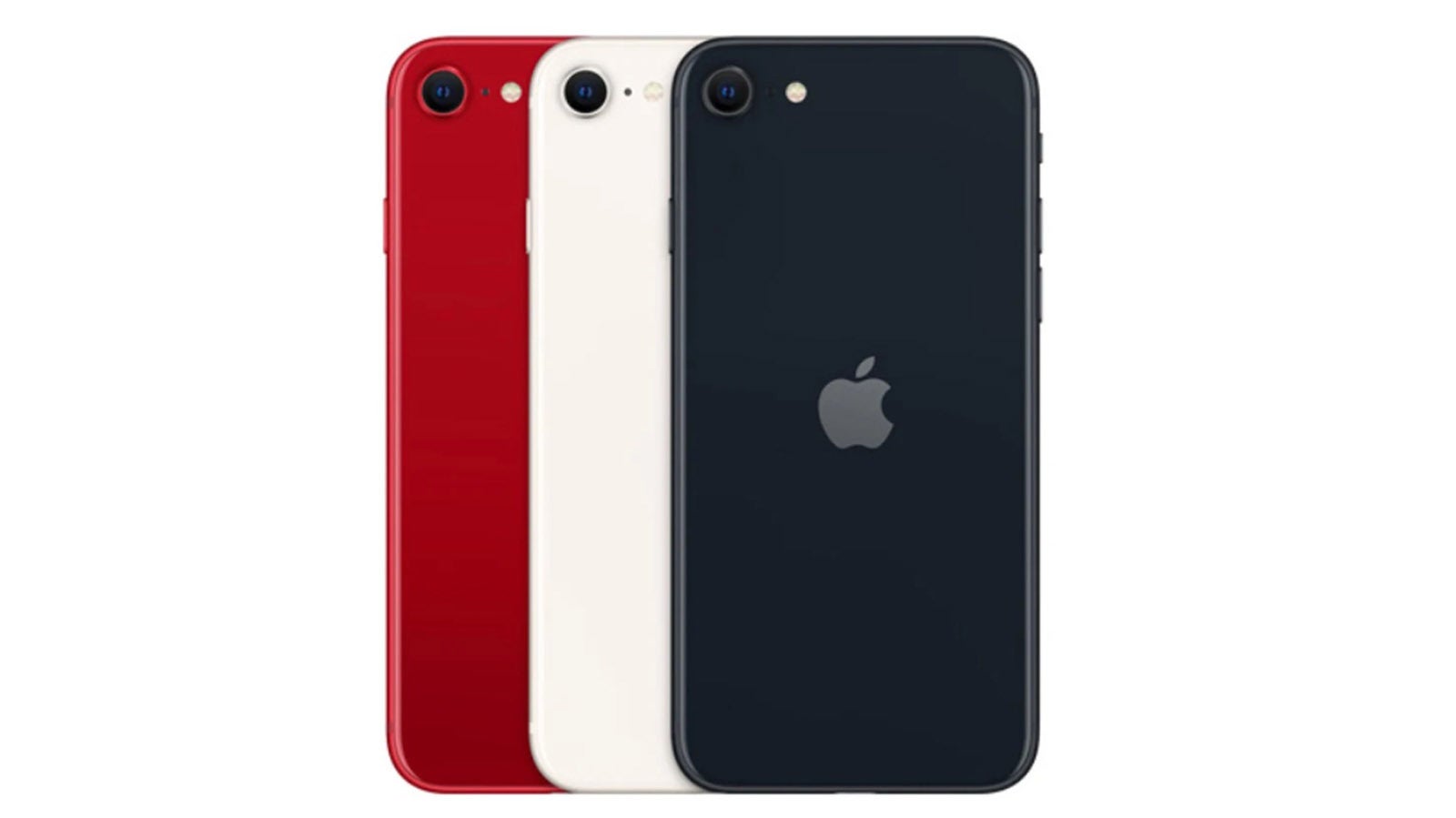
Two years after the release of the second generation SE, Apple was ready to introduce a new member to the family: the iPhone SE (2022).
There weren't any high hopes or much hype for this iPhone before the launch, and it was mostly a modest update. The SE (2022) came with the same form factor as the previous iPhone SE, and that design dates back to 2014 and the iPhone 6, so it definitely looked ancient at launch. The problem most reviewers quoted, however, was the small for the times 4.7-inch screen that also happens to use the older LCD technology and has a lower than average resolution.
On the flipside, Apple equipped the SE (2022) with the Apple A15 chip. This was not only the fastest processor in a budget phone in 2022, it was the fastest processor on any phone, period. Teardowns also revealed a surpising 10% bump to the battery capacity, unexpected considering the unchanged form factor. This was also the first budget iPhone with 5G connectivity and while the modem did not support mmWave, it had the far more important C band frequencies for wide coverage across the US.
Finally, all of that came at a slightly higher, $430 starting price.
iPhone 14, 14 Plus, 14 Pro and 14 Pro Max
September 2022
iPhone 14 Specs | iPhone 14 Review
iPhone 14 Plus Specs | iPhone 14 Plus Review
iPhone 14 Pro Specs | iPhone 14 Pro Review
iPhone 14 Pro Max Specs | iPhone 14 Pro Max Review
iPhone 14 Plus Specs | iPhone 14 Plus Review
iPhone 14 Pro Specs | iPhone 14 Pro Review
iPhone 14 Pro Max Specs | iPhone 14 Pro Max Review
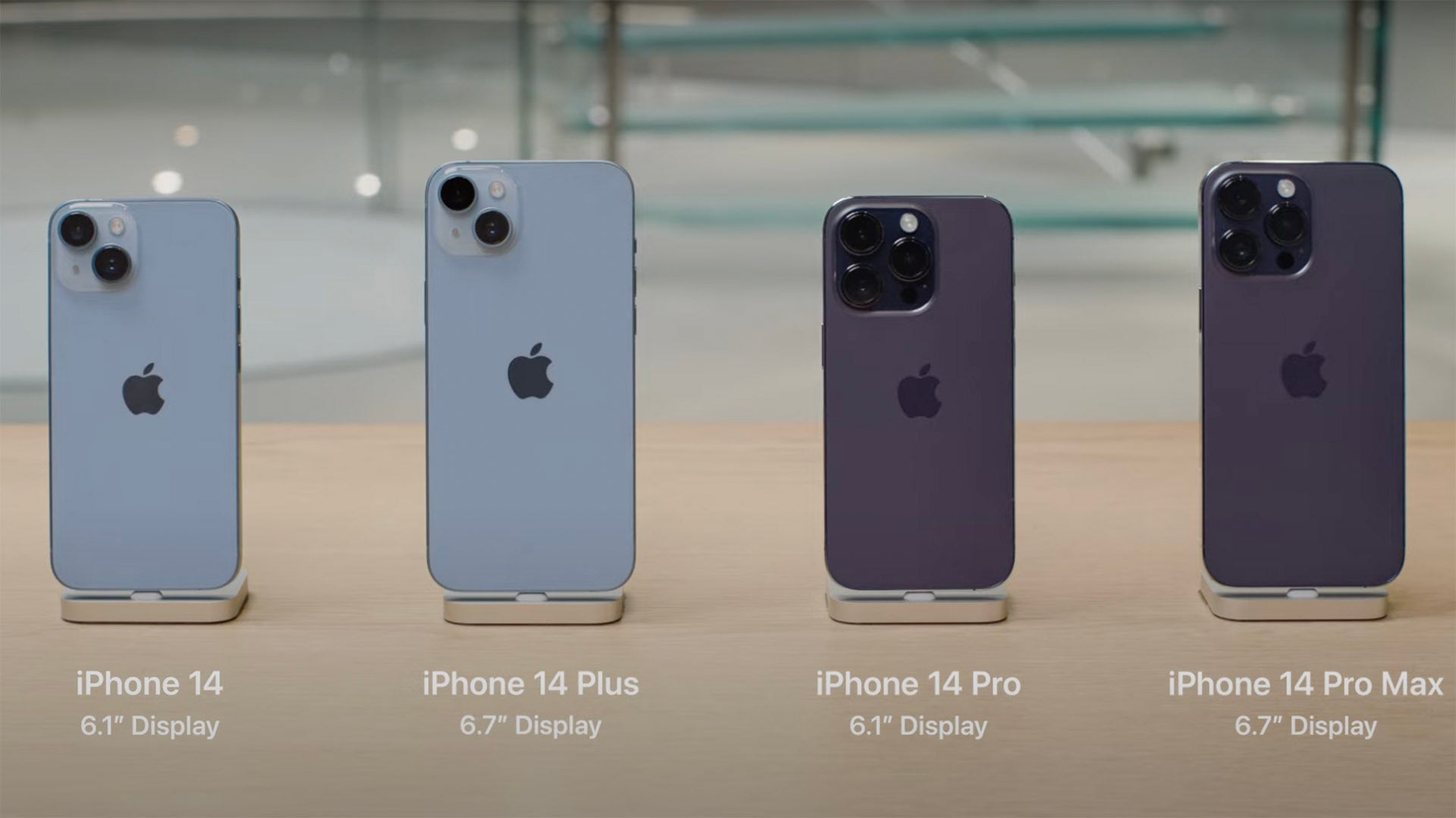
Apple killed the "mini" from its iPhone series and replaced it with the total opposite: a large, 6.7" iPhone 14 Plus.
So the iPhone 14 lineup consists of an $800 iPhone 14, a $900 iPhone 14 Plus, a $1,000 iPhone 14 Pro and a $1,100 iPhone 14 Pro Max.
For the first time ever, the non-Pro versions don't get a new processor and use only a slightly upgraded version of the Apple A15 chip used last year. The iPhone 14 Pro editions do get the new Apple A16 chip, so there is a bigger gap between the vanilla and the Pro versions this year..
The design remains mostly the same on the regular version, but there are bigger changes on the Pros. The notch is being replaced by the Dynamic Island, a pill-shaped camera module. It bubbles and pops with notifications and alerts, and is just so well animated and fluid, and such a clever idea. And yes, it still support Face ID.
The other big news is that the Pro models get an upgrade to a larger-sensor, 48MP main camera. Cinematic Mode now works in 4K too, and supports both 24fps and 30fps.
Battery life and charging speeds, however, have not changed in any meaningful way.
iPhone 15, 15 Plus, 15 Pro and 15 Ultra
September 2023
iPhone 15 Specs | iPhone 15 Review
iPhone 15 Plus Specs | iPhone 15 Plus Review
iPhone 15 Pro Specs | iPhone 15 Pro Review
iPhone 15 Pro Max Specs | iPhone 15 Pro Max Review
iPhone 15 Plus Specs | iPhone 15 Plus Review
iPhone 15 Pro Specs | iPhone 15 Pro Review
iPhone 15 Pro Max Specs | iPhone 15 Pro Max Review

Apple unveiled the iPhone 15, iPhone 15 Plus, iPhone 15 Pro and iPhone 15 Pro Max on September 12th, 2023.
The biggest upgrade for the vanilla iPhone 15 and iPhone 15 Plus was a new 48-megapixel main camera sensor with 2X sensor crop, the first time the vanilla iPhones have some higher quality zoom option. Other new features are the A16 Bionic chip, the Dynamic Island, a screen that matches the Pro series in brightness, as well as the new USB-C port. However, you still don't have ProMotion on these two iPhones, and they also lack a physical zoom lens.
The 15 Pro and 15 Pro Max received a bigger list of upgrades. They are both built using a new and more durable titanium frame, and both models weigh significantly less than before. You also get a new 5X zoom camera, but only on the Pro Max, while the smaller Pro version sticks with a 3X zoom one. The camera updates don't end there: you also get new 1.2X and 1.5X sensor crop options, and those are both very popular zoom lengths that will get a lot of use.
Other new features include the new A17 Pro chipset, a screen with much slimmer bezels and the USB-C port which on the Pro models supports faster USB 3 transfer speeds. The usual ProRAW and ProRES recording options are also here.
Oh, and you have a new Action button only on the Pro models which you can set to anything you like via the Shortcuts app.
iPhone SE 4th Gen (2024)
First half of 2024
Apple is expected to unveil its next generation iPhone SE (the 4th gen) in the first half of 2024.
Currently, the iPhone SE is on a 2-year update cycle, and that's why expect to see bigger than usual upgrades this year.
The rumor mill says the iPhone SE will make the jump from the old touch button to the new gesture navigation and more modern iPhone design style. Expect to see a kind of reworked iPhone XR. We still don't know much about the cameras (whether it will even get a secondary camera or no), but we do expect a newer chipset, possibly the A16 Bionic and improved battery life.
iPhone 16, 16 Plus, 16 Pro and 16 Pro Max
September 2024
The next iPhone 16 generation is expected to launch in September 2024, but it's still too early to predict much about it.
So far, rumors claim that Apple will introduce a larger 6.3-inch size for the iPhone 16 Pro and a bigger 6.9-inch size for the iPhone 16 Pro Max, while the vanilla iPhone 16 and iPhone 16 Plus might remain at the old 6.1-inch and 6.7-inch sizes.
With these bigger sizes, we expect to see the new 5X zoom lens arrive on the smaller iPhone 16 Pro for the first time. Also, it's possible that we get improved battery life with these larger sizes.
As for the vanilla models, the big question is whether they will finally get ProMotion, but analysts are split on that, some think this feature will come to the iPhone 17 series, while others think the iPhone 16 might get it too.
We will be updating you with more on the iPhone 16 as the news come in.
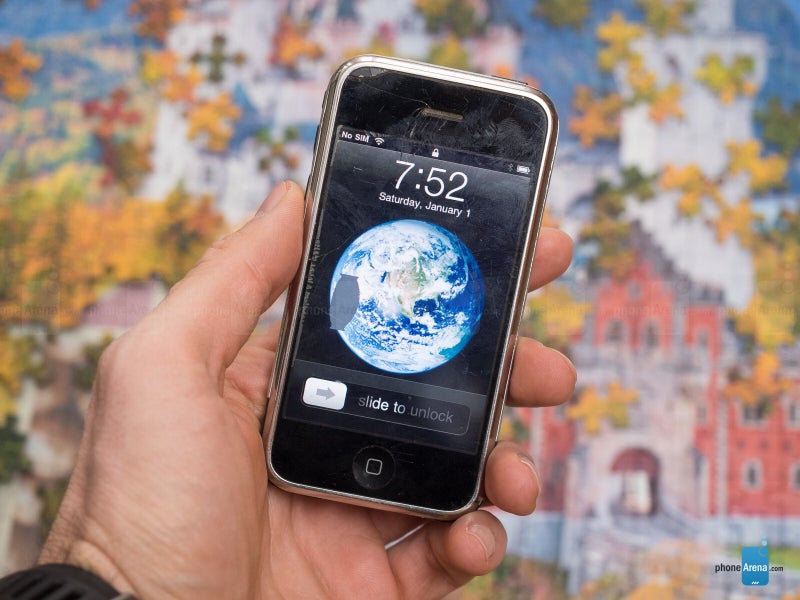
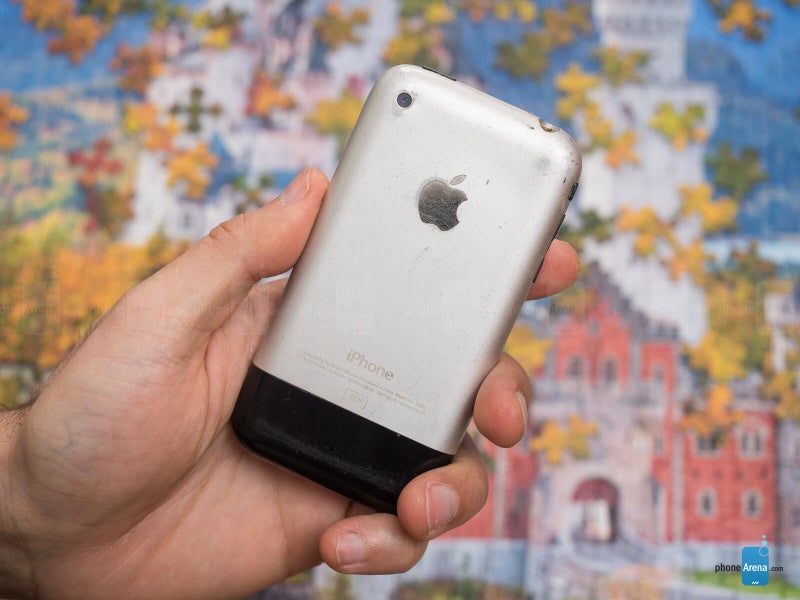
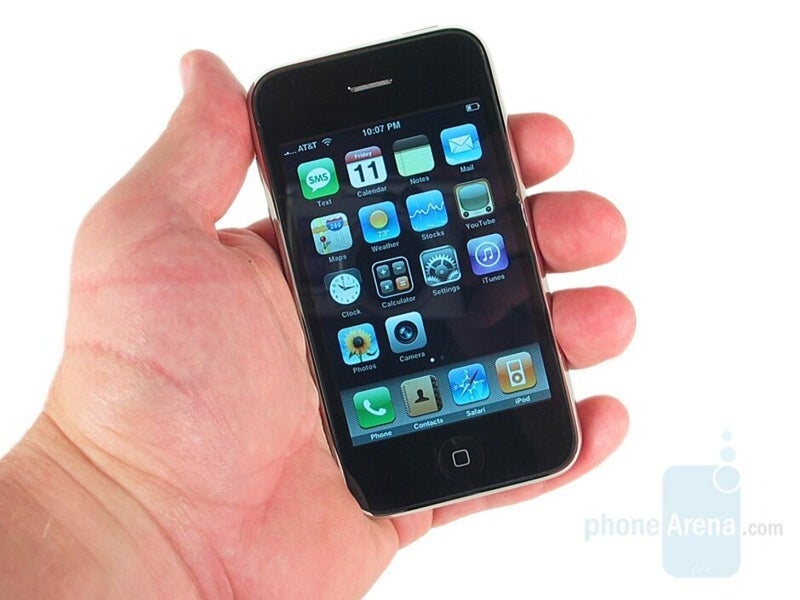
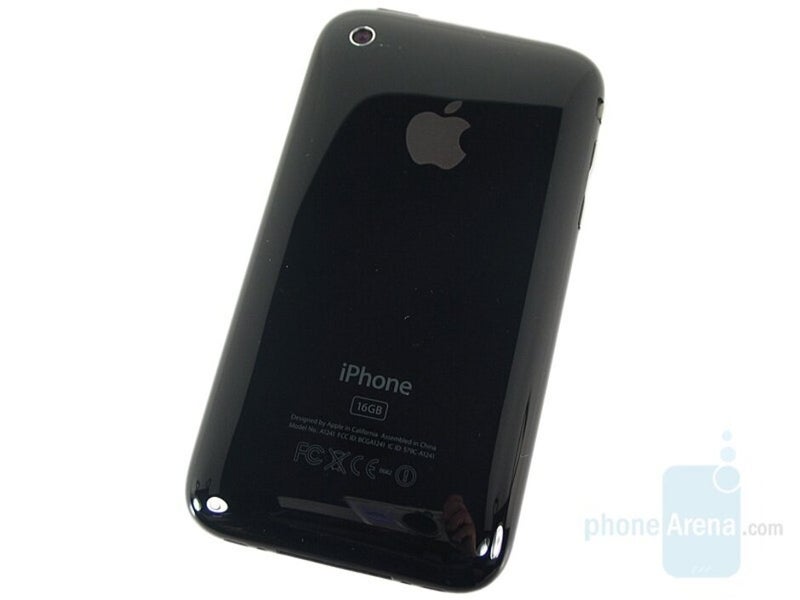
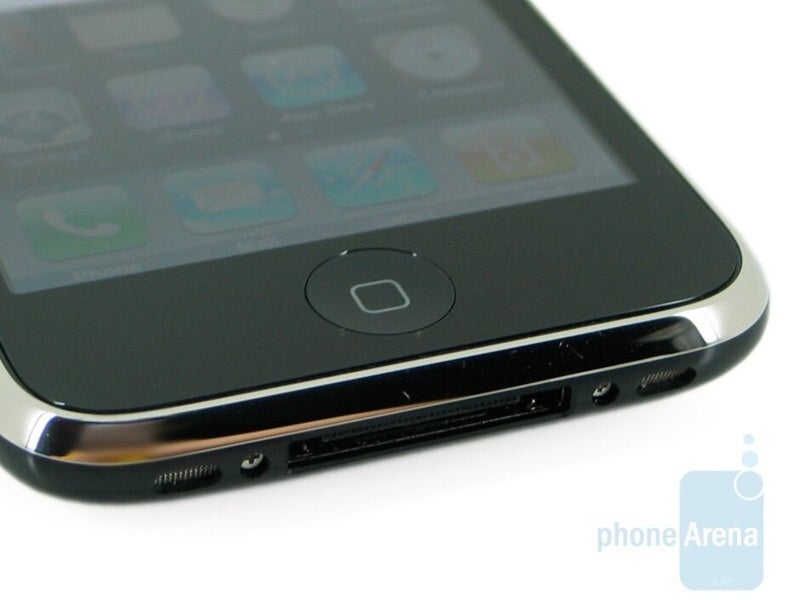
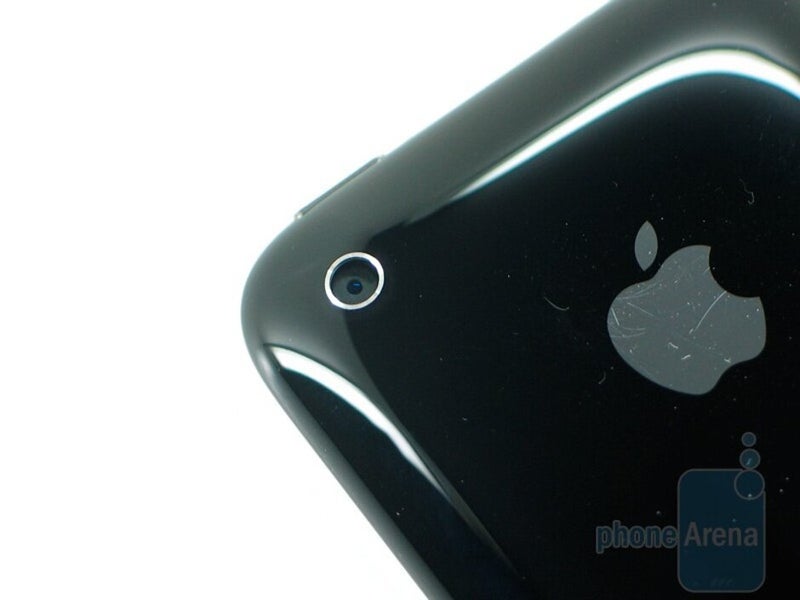
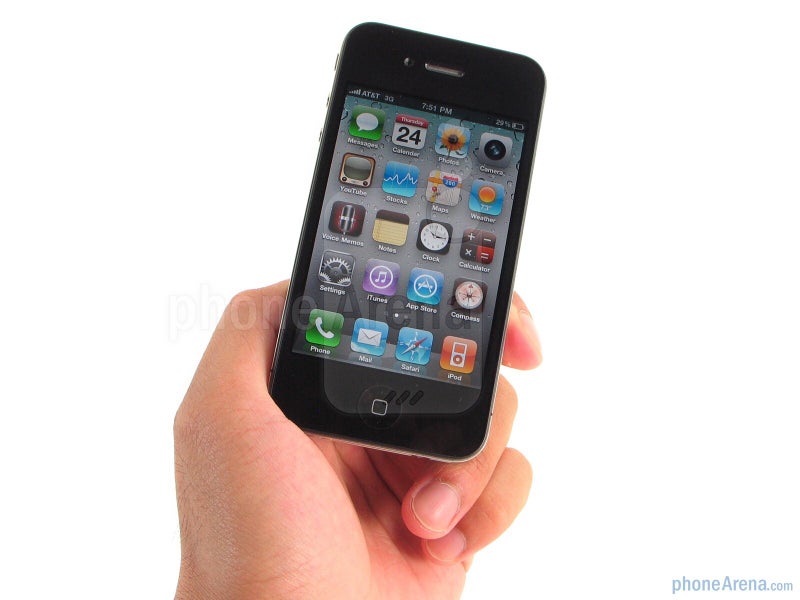
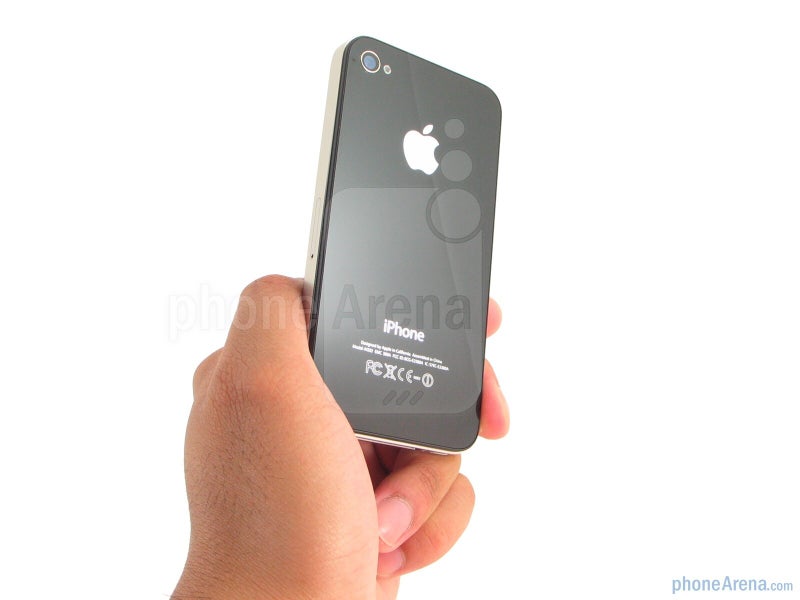
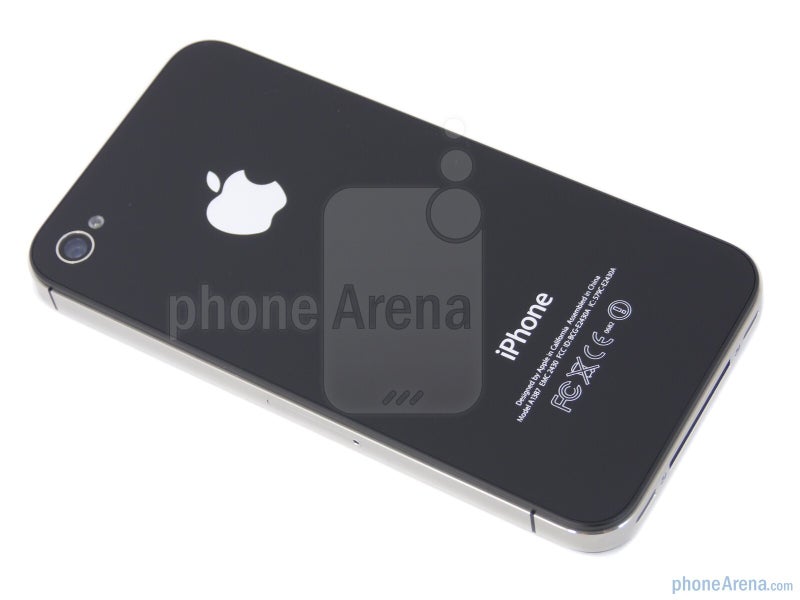
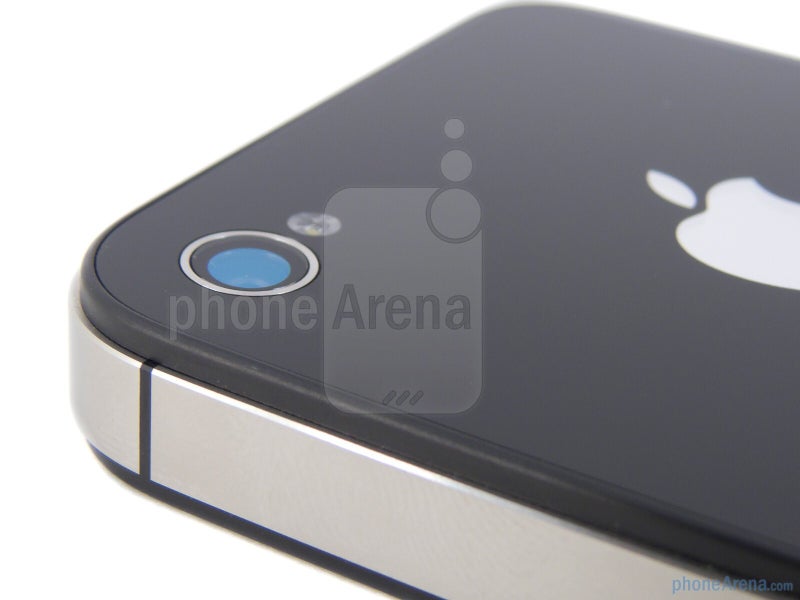
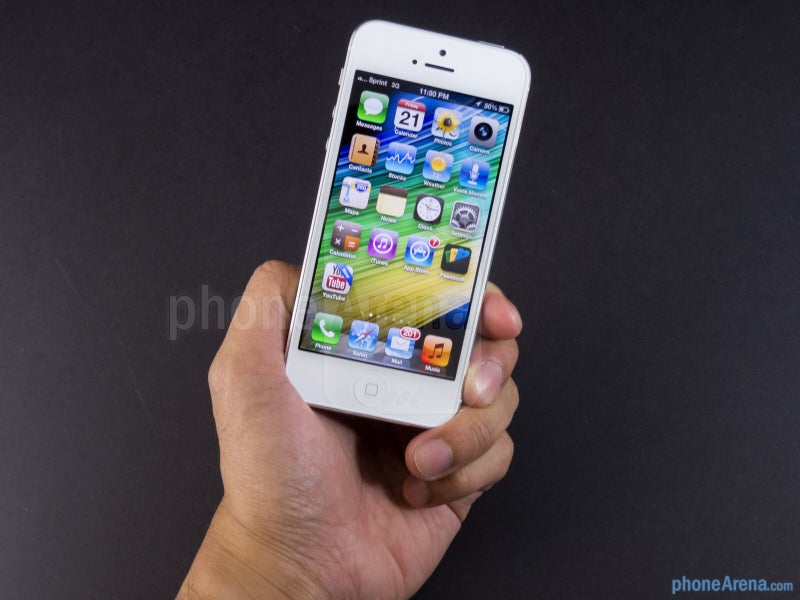
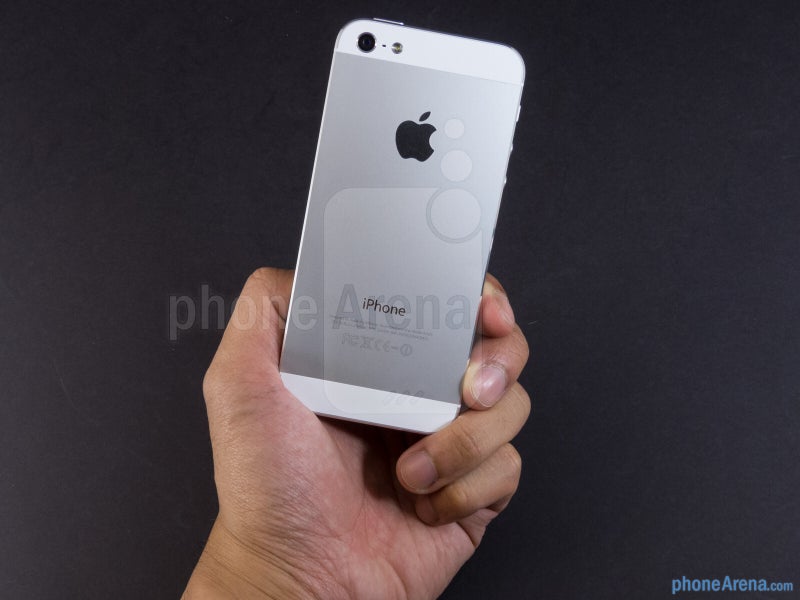

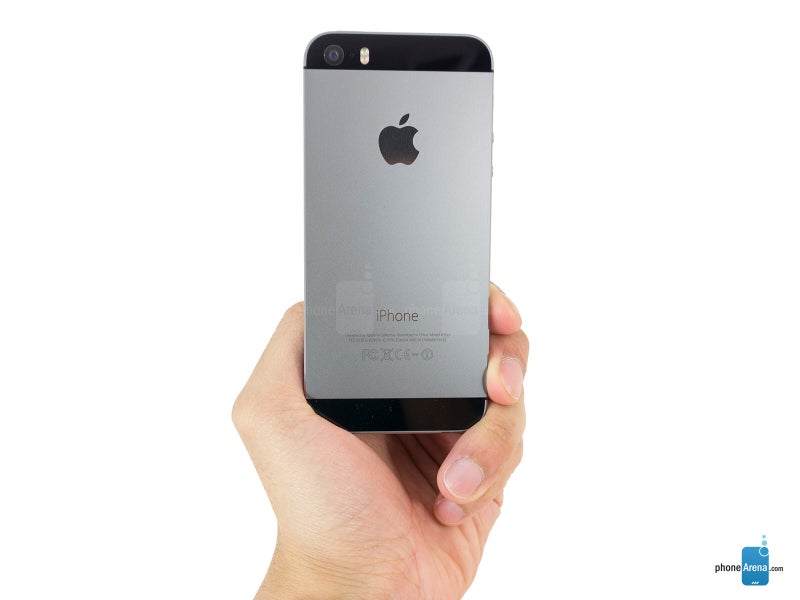
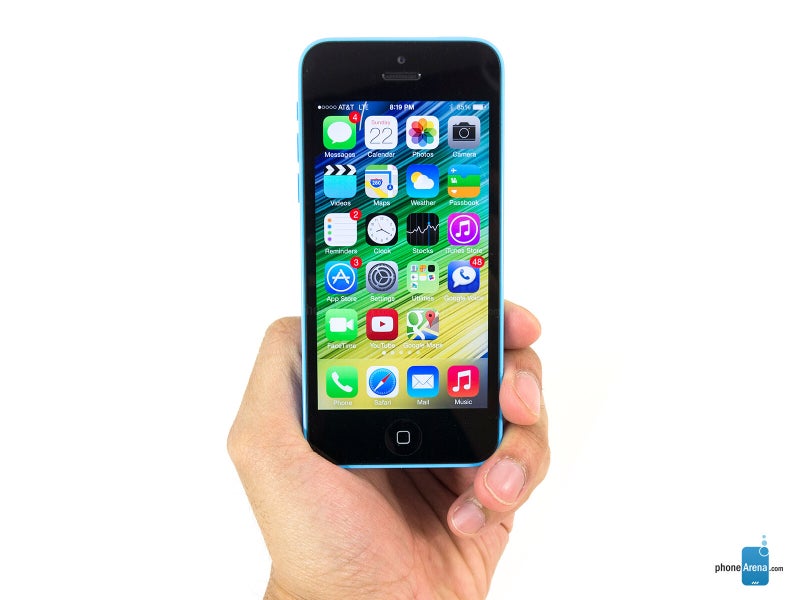
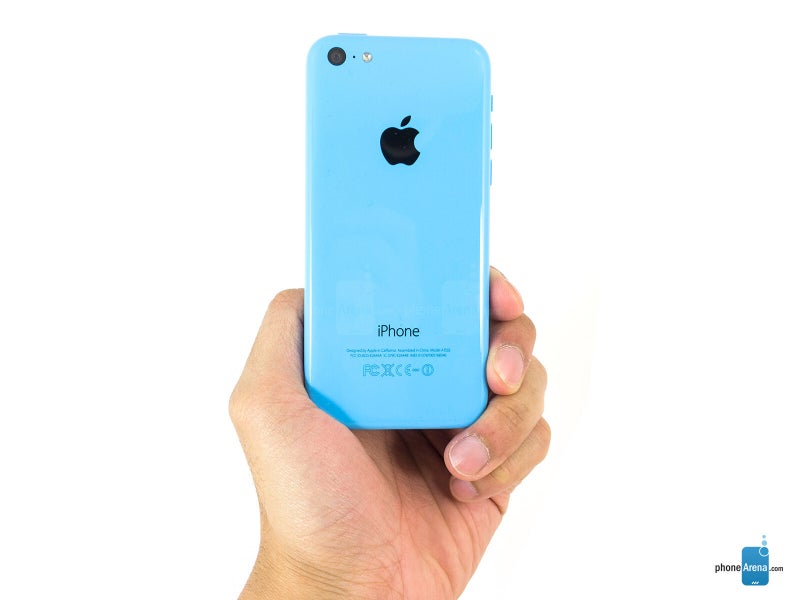
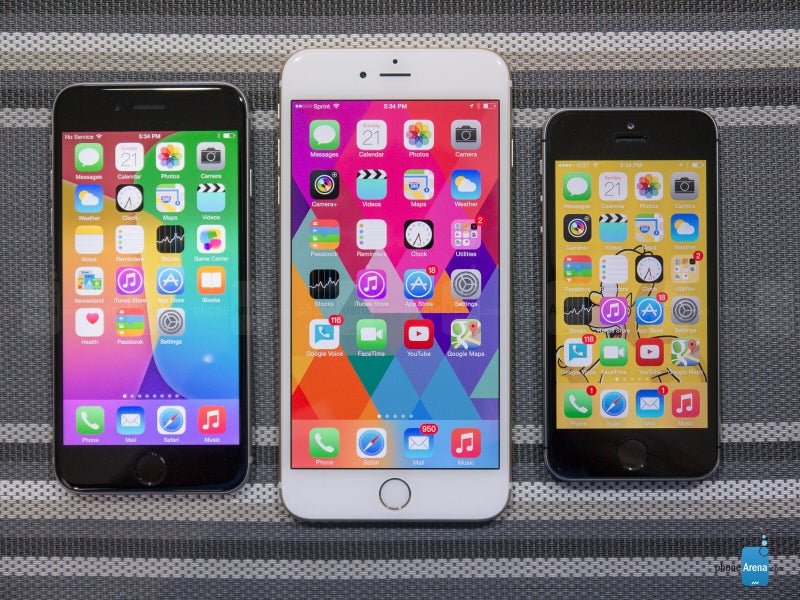
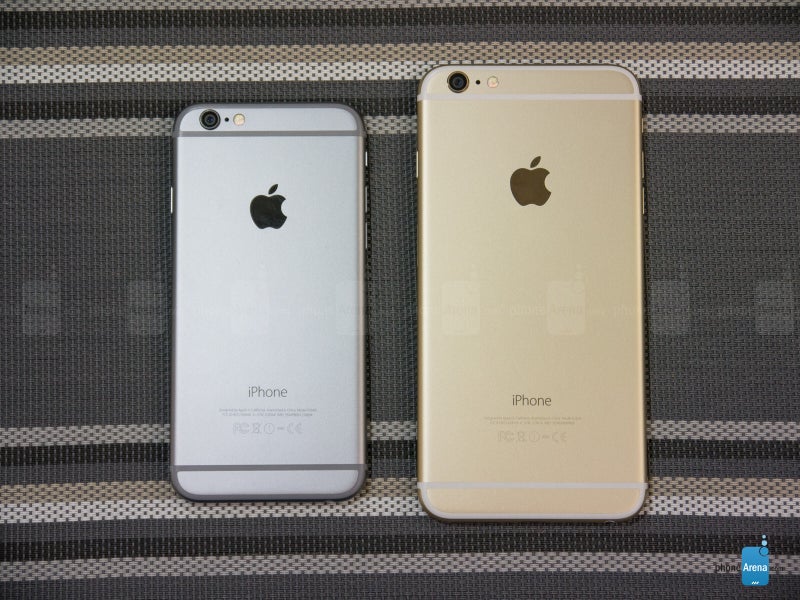
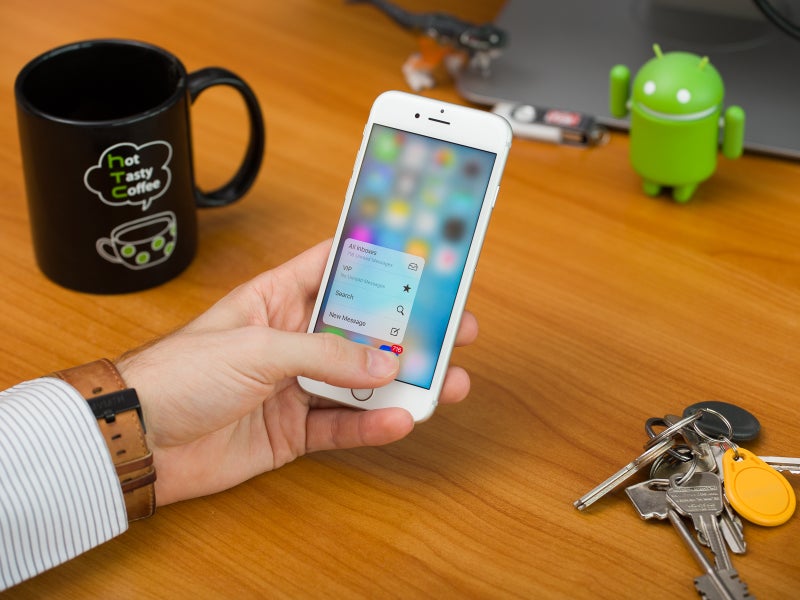
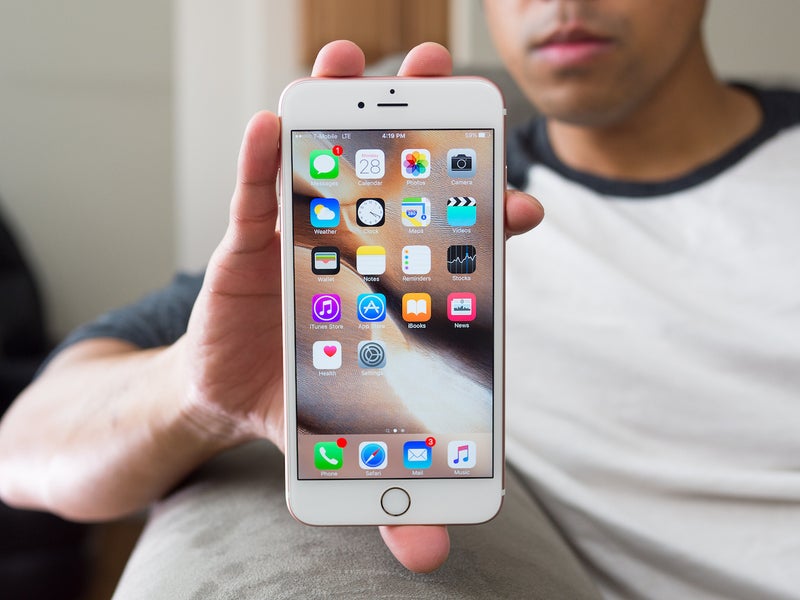
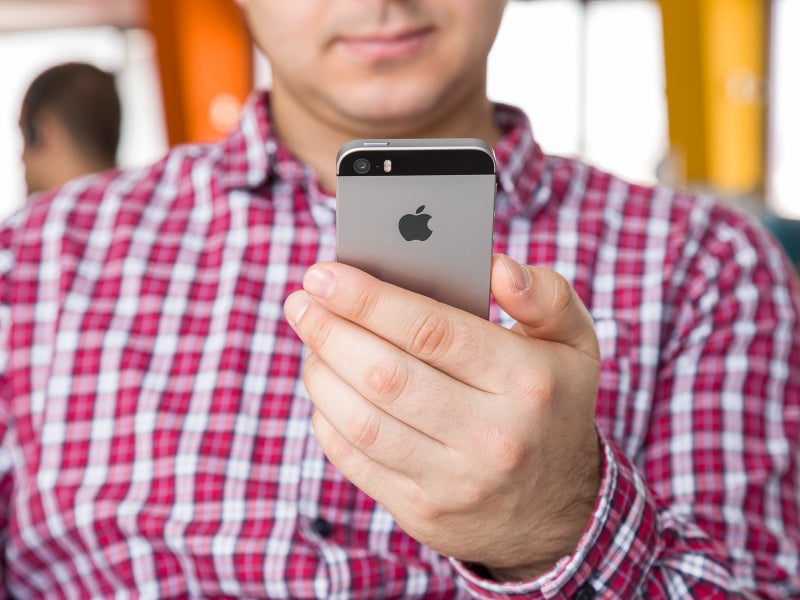
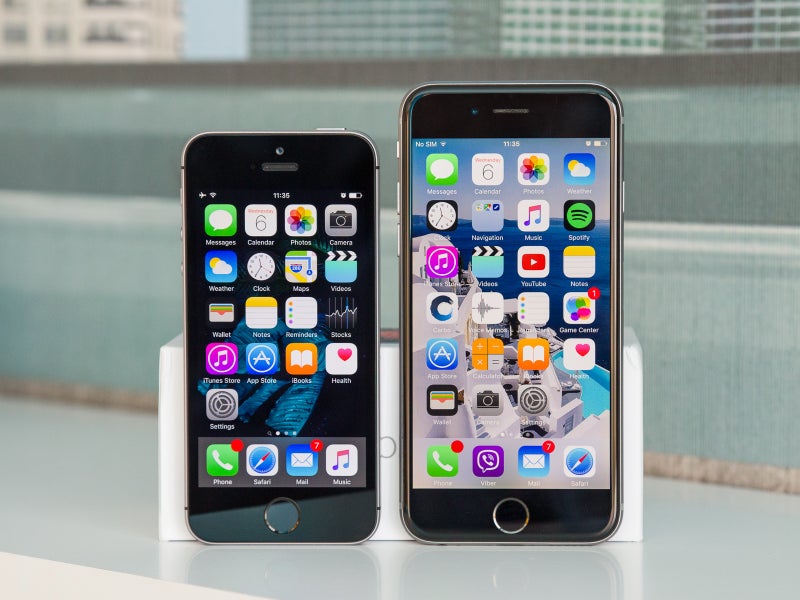
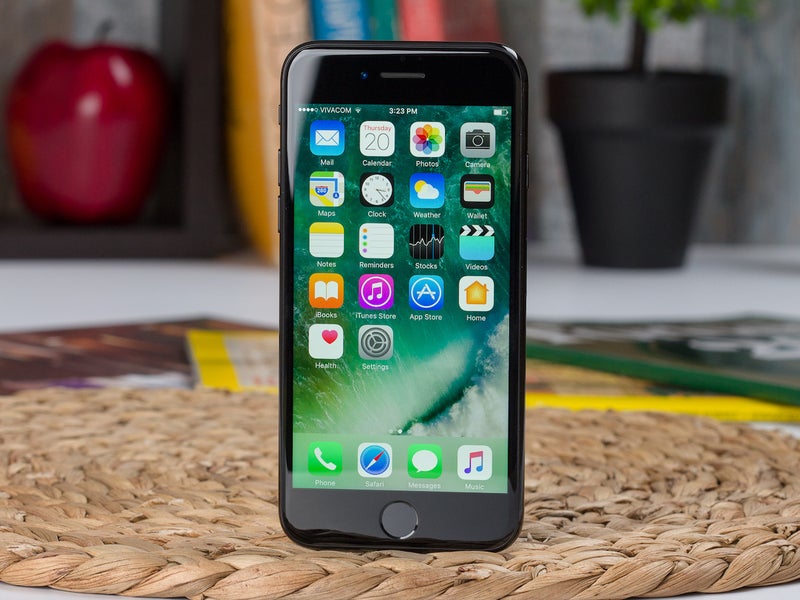
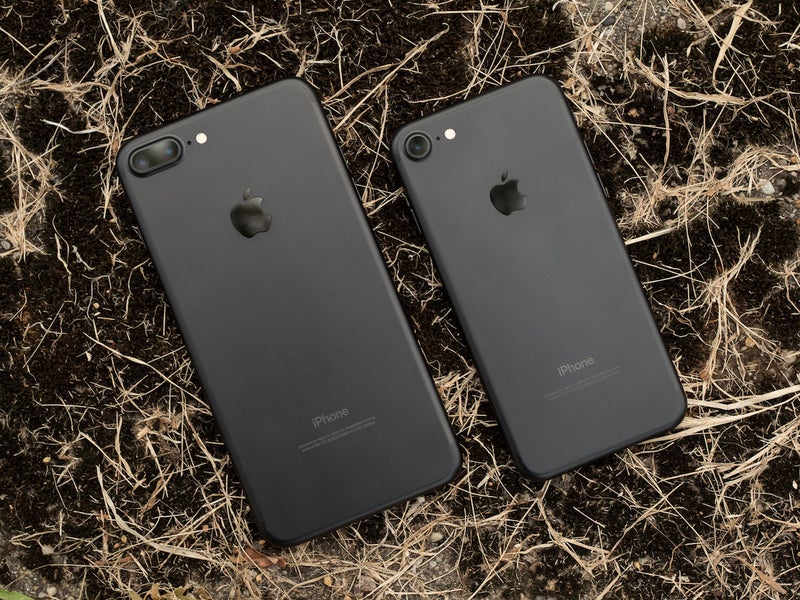
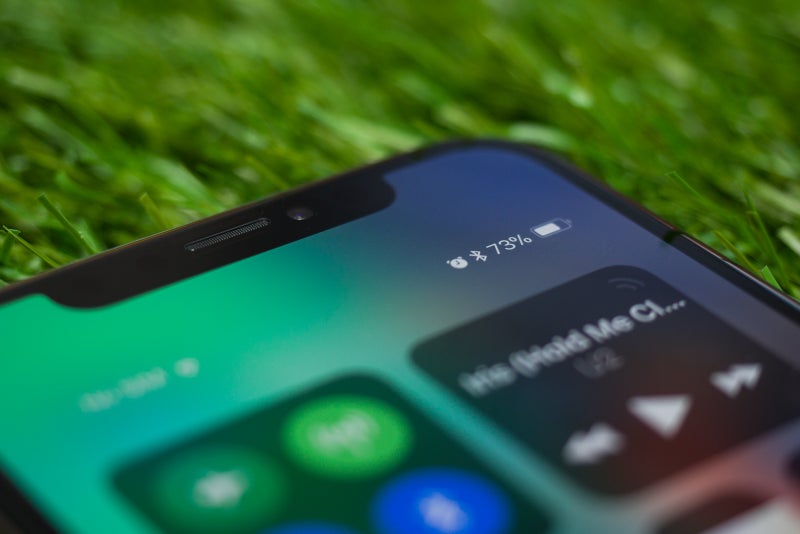
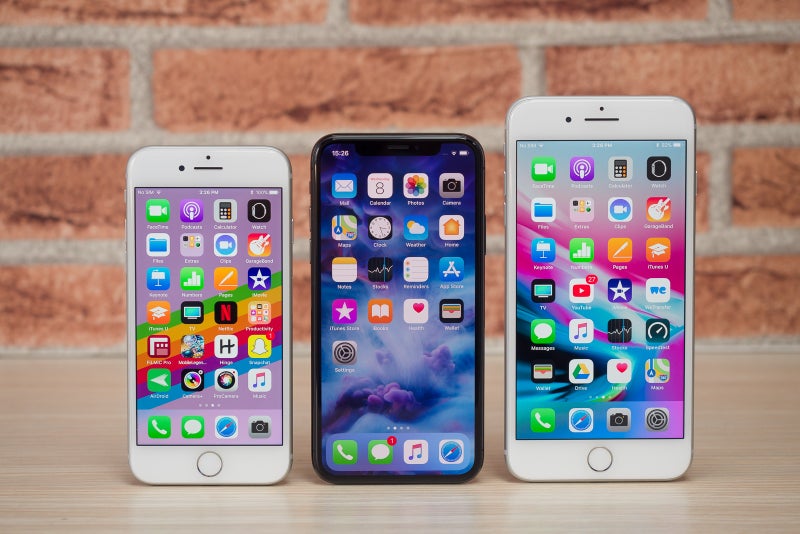
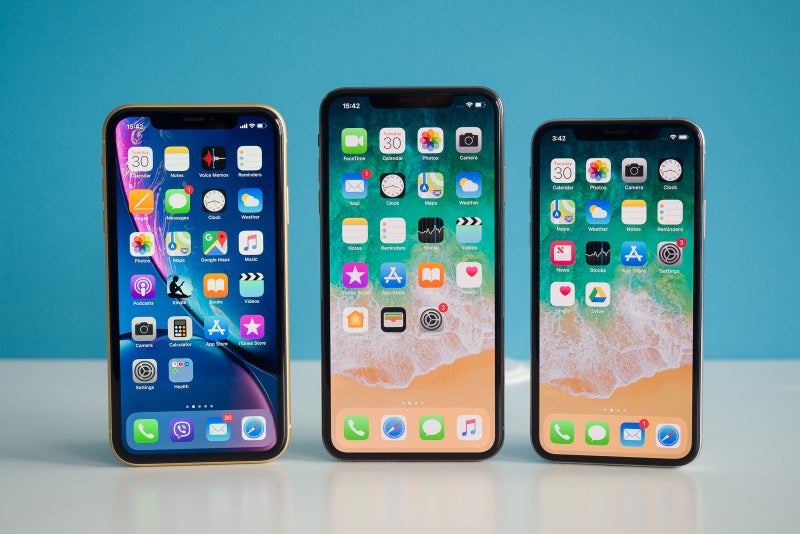
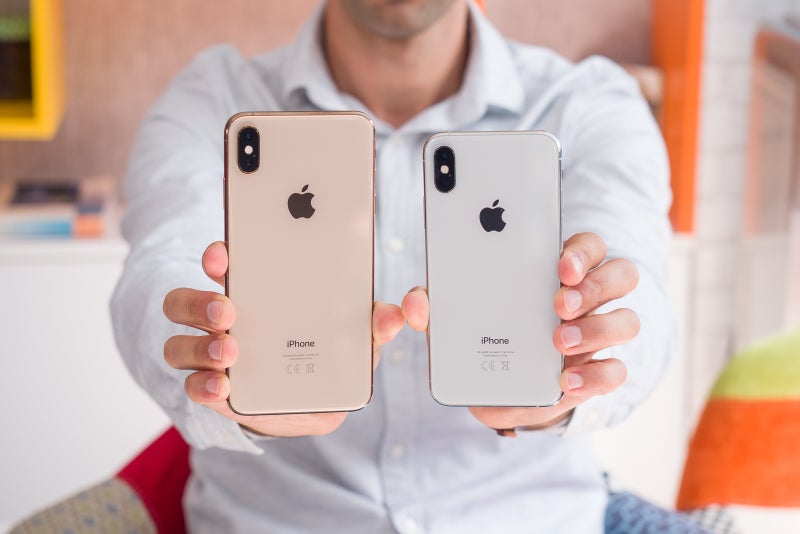
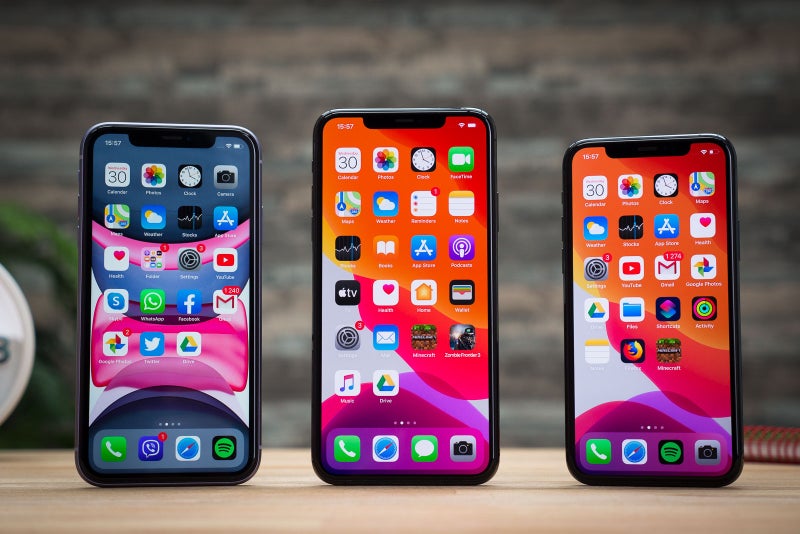
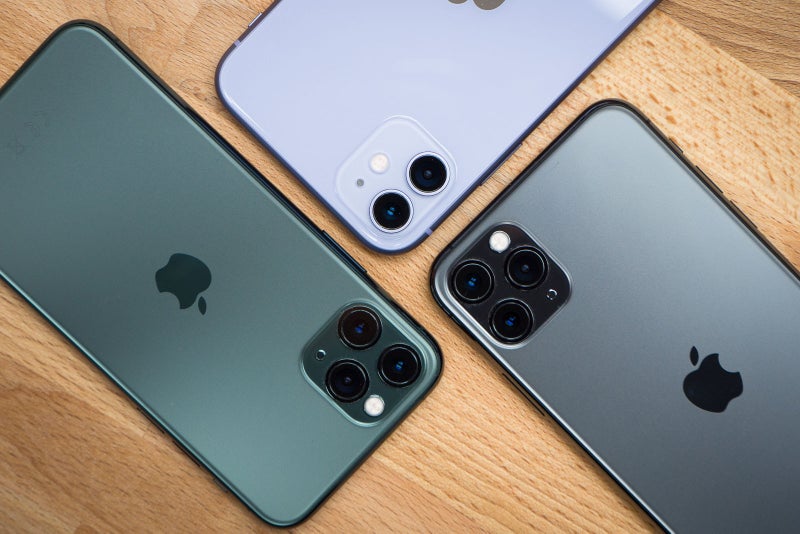
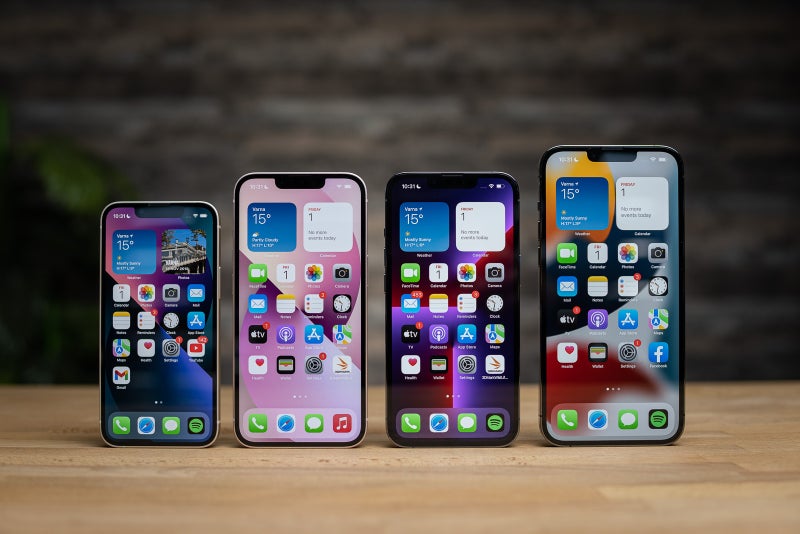
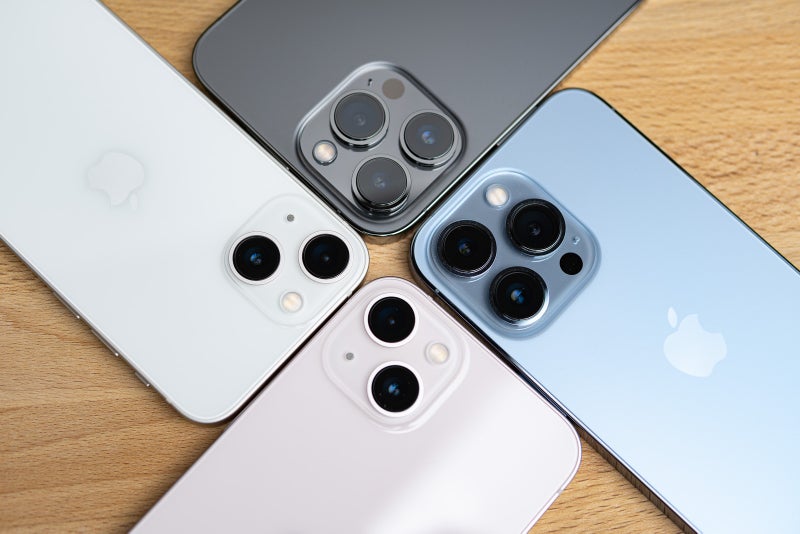













Things that are NOT allowed: